Peacocks are large, social birds that a lot of people love having on their property. They don’t take a lot of maintenance and can provide useful and early alerts for any predators in the area looking for your chickens or other small animals to eat.
Whether you have a big backyard and want some colorful birds or your reason for wanting peacocks is more practical, raising them by yourself can be somewhat challenging. Even though these are large birds when fully grown, small peafowl are vulnerable to the elements, are at high risk of drowning, and require other special considerations.
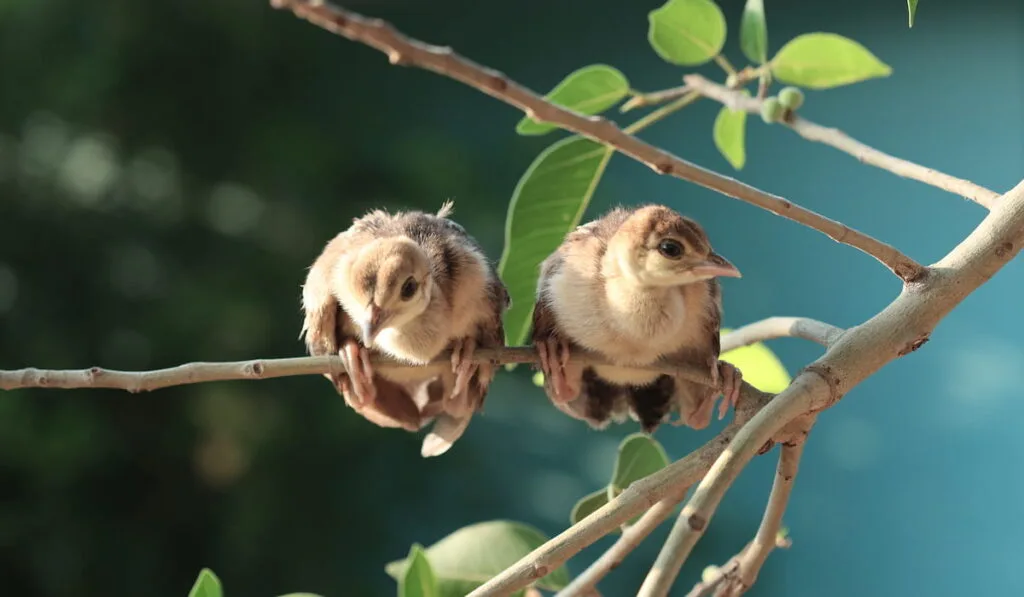
Getting their diet right is critical, as is controlling the environment temperature until their feathers are large enough to give them proper insulation. However, once peachicks make it through the first several weeks, things typically get much more manageable.
If you’re considering raising baby peacocks, here’s a guide to increase your chances of success, so you can enjoy the company of these beautiful birds. But, first, let’s explore what you’ll need and how you can keep your peachicks comfortable and safe.
Table of Contents
Getting Ready for Peacock Brooding
Preparation is, no surprise, your most important concern. A good setup will lower the risk of injury or death, and you’ll find yourself scrambling a lot less once the peachicks hatch or you acquire them.
Cover the following bases to ensure things are ready to go before you get your baby birds.
Size
Each peafowl will need to live for about eight weeks in a protective brooder where wind and water can’t get in. Usually, the peachicks will huddle together to stay warm, but you should give them enough space where they can move around.
If you’ve raised chicks before, you can use the same enclosure, like a large box, while they grow their feathers.
Feed
Larger birds need more protein than smaller birds, like chickens. Peacocks will need a gamebird starter that you can purchase online or at local farm supply stores.
If you can’t find a gamebird starter, use a turkey starter instead.
If you’re worried about feed, you can always add more protein to their diet by adding cooked eggs.
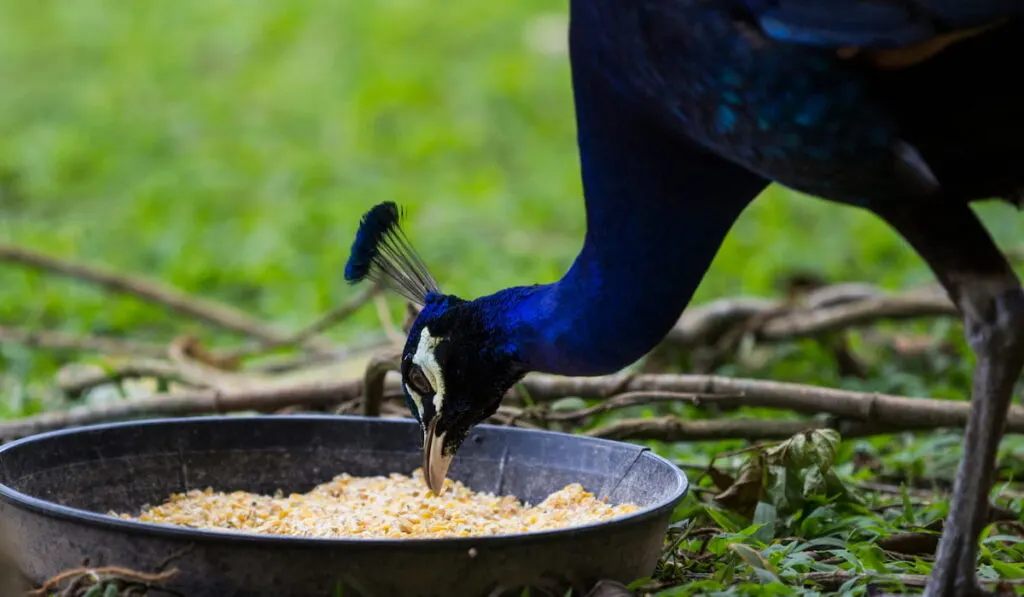
Water
One of the biggest risks to baby birds is that they drown easily.
Thirsty baby birds tend to find their way into large water bowls and get stuck. As a result, they eventually drown.
Keep your peachicks safe by buying a very shallow water bowl.
You need to change the water frequently because droppings can find their way in and contaminate their water supply.
Temperature
While very young, peachicks will need to stay warmer than usual.
Ideally, you’ll keep the temperature where they’re living at around 95°F. Then, you can lower the temperature by around five degrees every week.
Use a heat lamp, space heater, or a brooder plate that mimics how it feels to live underneath their mother. Most of these heating devices come with adjustable temperature gauges and other features.
However, you can’t rely on just the temperature gauge.
You also need to watch your baby birds closely to see how comfortable they are.
If they are all huddled closely together, it indicates that they’re too cold, so you should warm things up until they move around a bit more.
If you live somewhere cold, then something like a single heat lamp or brooder plate likely won’t be enough for the job. So instead, you may have to crank up the heat in your home or put the baby birds in a warm room until things heat up outside.
Avoiding Sickness in the Brooding Phase
People have a hard time dealing with peachick losses.
However, whenever you’re raising small, fragile animals, some are not going to make it. Unfortunately, peachicks die just like baby chicks and other birds.
In many cases, deaths are attributed to sickness and disease. Some peachicks won’t make it no matter what you do, but others die because of brooding conditions, which is something you can certainly control.
Here’s how:
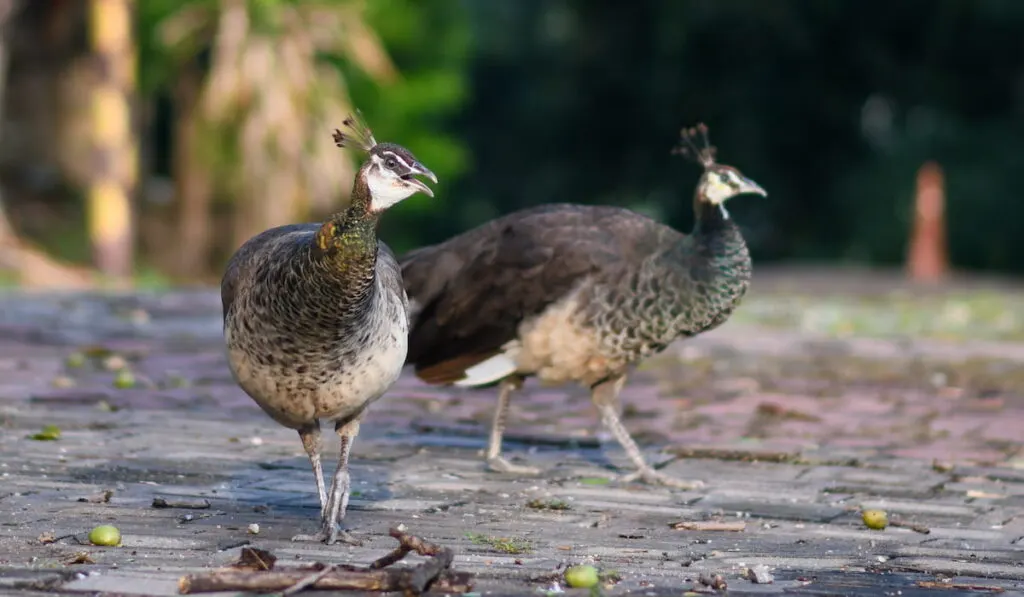
Step 1 — Keep Things Clean
Clean your brooding space regularly. Don’t let droppings build up too easily.
When your birds walk over droppings all day, they inevitably track them into the water source, and then birds are essentially eating feces. It can make them sick.
How frequently you’ll need to clean things and change newspapers depends on how many birds you raise.
Just avoid too many droppings hanging around and do your best to keep your birds clean.
Step 2 — Getting the Heat Right
Birds die when they get too cold, but you can also overheat your peachicks. Some people are so worried about cold deaths that they make things much too hot inside.
Instead, apply more heat to one side of the box to let the peachicks decide how warm they want to be. They’ll adjust to where they are most comfortable.
You can do this either by having the heat lamp on one side of the box or tilting your brooding plate so it’s hotter on one side and cooler on the other.
Step 3 — Use High-Quality Feed
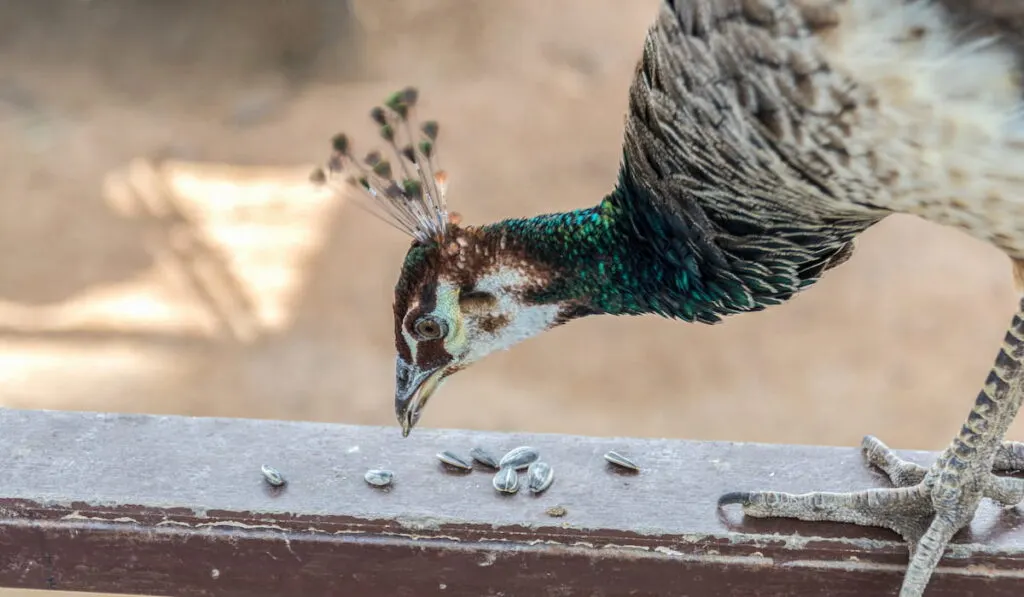
You don’t have to use the most expensive game bird feed you can find, but you need to make sure it’s clean and stored properly. Don’t give your birds any type of moldy or expired food.
Also, peachicks have fragile immune systems, so wash any fruits, vegetables, and other foods you’re using to supplement their feed.
Step 4 — Avoiding Disease
Diseases and parasites are common peachick killers. Vaccines lower the potential for disease-related deaths.
If you think one of your peachicks has a parasite, you can use medication to treat it. There are also medicated feeds available that prevent common infections.
Keep in mind that peafowl have an increased risk of attracting parasites compared to domestic birds like chickens. As a result, you should avoid raising baby peacocks with other birds like chickens, ducks, geese, etc.
Step 5 — Act Early
Responding quickly to any concerns or peachick behaviors that worry you will help avoid peachick deaths.
One thing people wonder about is whether they should separate affected peachicks from the group.
Generally, you should keep the peachicks together. However, if the group is bullying a smaller peachick, for example, you should separate the peachick to protect it.
Timeline — What to Expect
Things happen quickly with baby birds.
Raising baby peacocks isn’t like raising a puppy or a calf. You’ll be amazed at how rapidly they go from a ball of fluff to a bird that can fly.
In fact, peacocks will be flying in just weeks. At eight weeks, they are fully feathered and ready to be outside.
Once they have all of their feathers, you can move them into their permanent enclosure or simply let them out if you’re letting them roam free.
To make sure everyone gets out of the brooder at the same time, you may need to put some sort of cover on your box to keep early flyers inside.
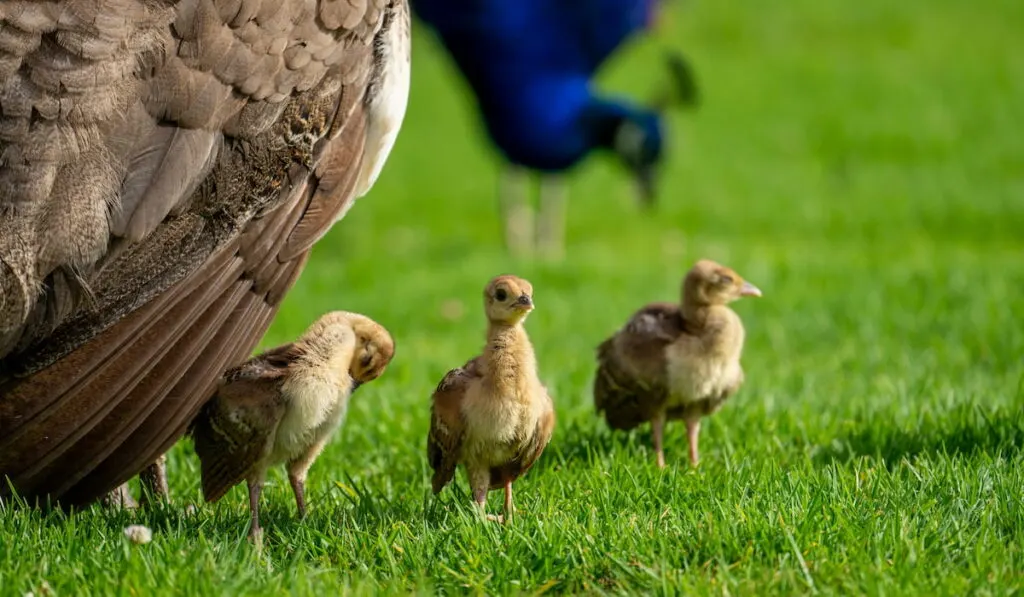
Where Can You Buy Baby Peacocks?
As peacocks become more popular, more and more people are breeding them to earn a bit of money. So chances are, you can find someone selling baby peafowl in your area.
Also, look on social media for farms or homesteads around you and whether they have any baby peacocks.
Likewise, there are a lot of online hatcheries that will mail you chicks. You’ll end up paying a bit more, but these outfits know what they’re doing and can give you healthy chicks, along with some good advice about raising baby peacocks.
Breeders tend to start breeding in the spring or early summer to avoid cold temperatures that are more likely to kill baby birds and make customers unhappy.
Letting Peahens Do Their Work
Of course, if you’re already a proud peacock owner, then you can simply let nature run its course.
Typically, a fully grown peahen will lay between four to 12 eggs in their second year. Obviously, that’s a lot fewer than chickens normally lay.
If the season is right, you can let your peahen do most of the work. They’ll keep the baby peacocks warm enough and get the proper exercise.
However, you will have to pitch in by giving them clean water they can easily access and game bird feed that delivers the protein they need to grow.
Moving Baby Peacocks into Their Permanent Enclosure
Remember, peacocks can fly.
Unfortunately, too many owners make it through the brooding phase and are surprised when they let out their peacocks, and they fly away!
The peacocks usually don’t fly too far, but it’s enough to make people nervous, especially after all that work getting them past eight weeks.
You can build a small roost to put your birds in where they can learn that this is home before you let them out on the lawn to wander around, eat insects, and enjoy their days.
All you have to do is give them roosting spots and protect them from the cold. Then, they’ll do the rest.
Overall, raising baby peacocks isn’t terribly complicated. Just make sure to keep them clean, warm, and safe from other birds or animals. Then, when they’re ready, peacocks are a fantastic addition to any farm or rural property.
